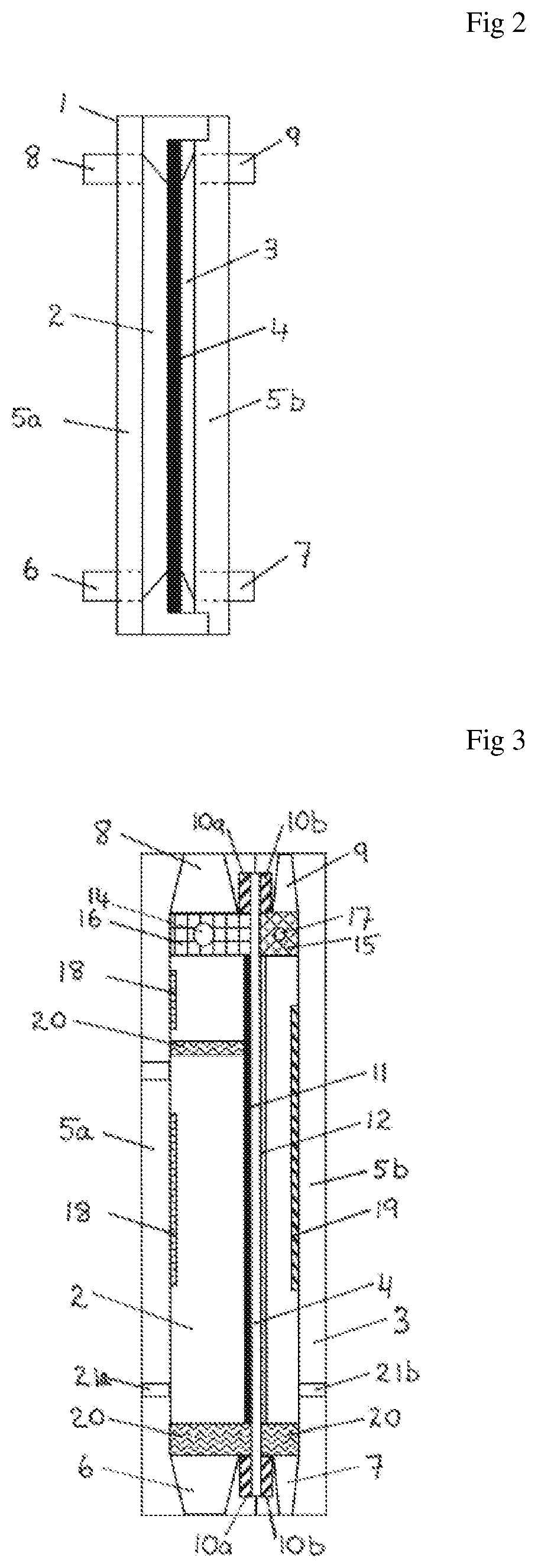Method and apparatus for electrochemical purification of wastewater
- Summary
- Abstract
- Description
- Claims
- Application Information
AI Technical Summary
Benefits of technology
Problems solved by technology
Method used
Image
Examples
case 1
late, Constant Mass Transfer Coefficient and Electrode Surface Area
[0044]
LimitingLimitingCurrent atCurrent atInitialMassfront end¾ pointBulktransferofalongCODcoefficientAeCexitelectrodelength(mg / L)(m / s)(m2 / m3)(mg / L)(A)(A)20001 × 10−520013686.31.7
case 2
ctrode, Constant Mass Transfer Coefficient and Electrode Surface Area
[0045]
LimitingLimitingCurrent atCurrent atInitialMassfront end¾ pointBulktransferofalongCODcoefficientAeCexitelectrodelength(mg / L)(m / s)(m2 / m3)(mg / L)(A)(A)20001 × 10−5400935112.5
case 3
ctrode, Constant Mass Transfer Coefficient and Variable Surface Area (this Invention)
AeAeLimitingLimiting(m2 / m3)(m2 / m3)Current atCurrent at ¾Initialfirst ¾ oflast ¼ offront end ofpoint alongBulk CODMass transferelectrodeelectrodeCexitelectrodelength(mg / L)coefficient (m / s)lengthlength(mg / L)(A)(A)20001 × 10−540030002721110.9
PUM
 Login to View More
Login to View More Abstract
Description
Claims
Application Information
 Login to View More
Login to View More - R&D
- Intellectual Property
- Life Sciences
- Materials
- Tech Scout
- Unparalleled Data Quality
- Higher Quality Content
- 60% Fewer Hallucinations
Browse by: Latest US Patents, China's latest patents, Technical Efficacy Thesaurus, Application Domain, Technology Topic, Popular Technical Reports.
© 2025 PatSnap. All rights reserved.Legal|Privacy policy|Modern Slavery Act Transparency Statement|Sitemap|About US| Contact US: help@patsnap.com



